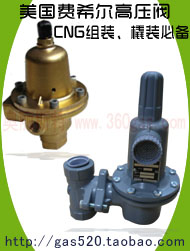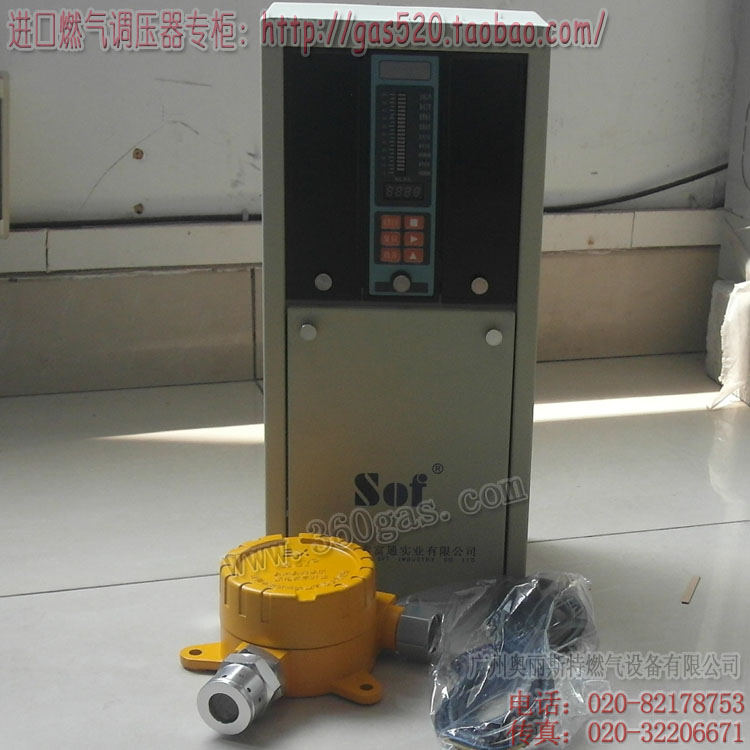位置:首页 > 燃气资讯 > VTG and Brunsbütte
VTG and Brunsbüttel Ports Cooperate on LNG
浏览次数 783 , 日期 2015-01-28 , 燃气设备 加入收藏
VTG Aktiengesellschaft, one of the leading wagon hire and logistics companies in Europe and Brunsbüttel Ports GmbH, owner and operator of the Brunsbüttel group of ports, Fisher 627-576 Gas pressure regulating valve,have signed an agreement in which both parties reaffirmed their commitment to the promising and environmentally-friendly energy source, liquefied natural gas (LNG).
“I am delighted that we have taken the next step, with our partner Brunsbüttel Ports, to further develop an LNG transport and logistics system”, said Dr. Heiko Fischer, CEO of VTG Aktiengesellschaft. “Together, we intend to utilize and extend opportunities for a land-based LNG supply across Europe from Brunsbüttel port.”
Both companies have been actively involved with the energy source LNG for some time now. Brunsbüttel Ports has been pressing ahead with plans for an LNG terminal in Brunsbüttel, while VTG has developed and is building two tank wagon prototypes for transporting LNG.
“We can see great potential for synergies”, said Frank Schnabel, Managing Director of Brunsbüttel Ports GmbH and the SCHRAMM group GmbH & Co. KG. “LNG is the ideal solution for environmentally friendly, sulfur-free ship propulsion. Furthermore, liquefied gas is emerging as an attractive alternative to pipeline gas for the industrial sector. A European-wide industrial supply, which also extends to cover inland sites, is the fundamental precondition driving this development forward. Having an LNG terminal at Brunsbüttel as a starting point and onward distribution by rail with the VTG LNG tank wagons would ensure that we can provide the industry, as well as potential gas users inland, with an efficient supply.”
VTG’s LNG tank wagons
VTG is building two prototypes to transport LNG by rail with its Czech partner, Chart Ferox. In this process, VTG is responsible for the development and completion of the wagons (including authorization and placing in service), and Chart Ferox is constructing the tank. Exceptionally good isolating properties enable the cryogenic LNG to potentially remain in the tank wagon for up to six weeks. Particular development effort was required for a unique suspension technique between the tank and the underframe, together with the complex dynamic und vibration calculation tests performed by VTG and Chart Ferox.
As an additional safety measure, the tank wagons are being equipped with 25t wheelsets instead of the 22.5t which is legally required and a GPS monitoring option for the tank. Transportation to and from Spain also poses no obstacle for the prototypes, despite the different gauge widths. The wagons are being constructed in such a way that regauging is possible at the French-Spanish border interchange stations.
Natural gas is traditionally transported in a gaseous state via pipelines. However, cryogenic liquefied natural gas can be transported by ship, truck and tank container, as it is cooled to a temperature of minus 162 degrees Celsius (-260 degrees Fahrenheit), which reduces its volume 600 fold.
Two tank wagons on the tracks replace four trucks or five tank containers on the road. This means less traffic jams, less environmental pollution and lower costs.
Brunsbüttel
Plans for the LNG terminal in Brunsbüttel consist of three components: an LNG tank at the site can supply LNG to the maritime transport sector as an alternative fuel; supplies can go to regional and national industry and additionally be used as a nationwide alternative gas supply.
Locational factors make Brunsbüttel the ideal site for Germany’s first LNG terminal. Favorably situated at the intersection between the river Elbe and the Kiel Canal, Brunsbüttel offers a strategically advantageous location to supply ships with LNG. In regard to supplying the industrial sector, large-scale quantity buyers are already based there and supplying across Europe could efficiently be performed by way of a railway connection. Furthermore, Brunsbüttel Ports GmbH already has decades of experience handling gas (LPG) and other hazardous liquid goods.
“I am delighted that we have taken the next step, with our partner Brunsbüttel Ports, to further develop an LNG transport and logistics system”, said Dr. Heiko Fischer, CEO of VTG Aktiengesellschaft. “Together, we intend to utilize and extend opportunities for a land-based LNG supply across Europe from Brunsbüttel port.”
Both companies have been actively involved with the energy source LNG for some time now. Brunsbüttel Ports has been pressing ahead with plans for an LNG terminal in Brunsbüttel, while VTG has developed and is building two tank wagon prototypes for transporting LNG.
“We can see great potential for synergies”, said Frank Schnabel, Managing Director of Brunsbüttel Ports GmbH and the SCHRAMM group GmbH & Co. KG. “LNG is the ideal solution for environmentally friendly, sulfur-free ship propulsion. Furthermore, liquefied gas is emerging as an attractive alternative to pipeline gas for the industrial sector. A European-wide industrial supply, which also extends to cover inland sites, is the fundamental precondition driving this development forward. Having an LNG terminal at Brunsbüttel as a starting point and onward distribution by rail with the VTG LNG tank wagons would ensure that we can provide the industry, as well as potential gas users inland, with an efficient supply.”
VTG’s LNG tank wagons
VTG is building two prototypes to transport LNG by rail with its Czech partner, Chart Ferox. In this process, VTG is responsible for the development and completion of the wagons (including authorization and placing in service), and Chart Ferox is constructing the tank. Exceptionally good isolating properties enable the cryogenic LNG to potentially remain in the tank wagon for up to six weeks. Particular development effort was required for a unique suspension technique between the tank and the underframe, together with the complex dynamic und vibration calculation tests performed by VTG and Chart Ferox.
As an additional safety measure, the tank wagons are being equipped with 25t wheelsets instead of the 22.5t which is legally required and a GPS monitoring option for the tank. Transportation to and from Spain also poses no obstacle for the prototypes, despite the different gauge widths. The wagons are being constructed in such a way that regauging is possible at the French-Spanish border interchange stations.
Natural gas is traditionally transported in a gaseous state via pipelines. However, cryogenic liquefied natural gas can be transported by ship, truck and tank container, as it is cooled to a temperature of minus 162 degrees Celsius (-260 degrees Fahrenheit), which reduces its volume 600 fold.
Two tank wagons on the tracks replace four trucks or five tank containers on the road. This means less traffic jams, less environmental pollution and lower costs.
Brunsbüttel
Plans for the LNG terminal in Brunsbüttel consist of three components: an LNG tank at the site can supply LNG to the maritime transport sector as an alternative fuel; supplies can go to regional and national industry and additionally be used as a nationwide alternative gas supply.
Locational factors make Brunsbüttel the ideal site for Germany’s first LNG terminal. Favorably situated at the intersection between the river Elbe and the Kiel Canal, Brunsbüttel offers a strategically advantageous location to supply ships with LNG. In regard to supplying the industrial sector, large-scale quantity buyers are already based there and supplying across Europe could efficiently be performed by way of a railway connection. Furthermore, Brunsbüttel Ports GmbH already has decades of experience handling gas (LPG) and other hazardous liquid goods.








